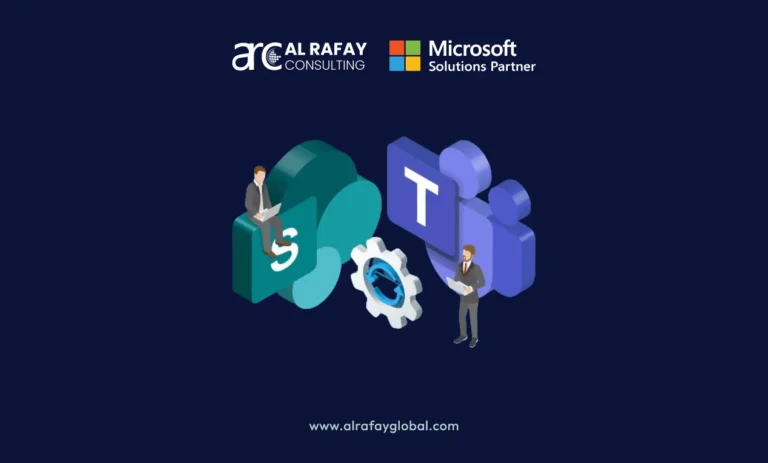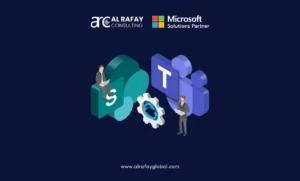Enterprise Content Management (ECM) is critical for modern organizations managing vast amounts of data. With the rise of digital data—predicted to exceed 200 zettabytes by 2025—organizations need systems that not only store data but enable efficient access, retrieval, compliance, and security. ECM addresses these needs, combining document management, records management, workflow automation, digital asset management, and collaboration capabilities to form a unified content management ecosystem.
In today’s digital workplace, ECM enables companies to manage and leverage unstructured data, which accounts for approximately 80% of enterprise data. By organizing, automating, and securing content, ECM systems drive productivity, streamline business processes, and reduce the risks of non-compliance.
This blog explores ECM best practices to optimize its implementation, usage, and ongoing maintenance, offering valuable insights for both technical leaders and business owners.
Understanding the Core Components of ECM
To understand ECM’s full potential, it’s essential to explore its foundational components:
Document Management: This component enables the systematic storage, retrieval, and organization of electronic documents, ensuring users can quickly access necessary files. Key features include version control, metadata tagging, and indexing, which collectively boost content findability.
Records Management: Records management focuses on lifecycle management for content critical for legal and regulatory compliance. Organizations need to ensure that information is retained only as long as required, mitigating risks tied to regulatory non-compliance and enabling efficient record-keeping processes.
Workflow Automation: Automation within ECM optimizes business processes by minimizing human intervention in repetitive tasks. For example, automating document approvals and notifications can reduce manual efforts, streamline workflows, and ensure accountability across departments.
Digital Asset Management: Essential for businesses that handle large volumes of multimedia content, digital asset management (DAM) organizes and categorizes rich media like images, videos, and design files, facilitating their quick retrieval and distribution across teams.
Content Collaboration: ECM also enables content sharing and collaboration, allowing teams to co-edit documents, set access controls, and maintain permissions for streamlined and secure teamwork.
These components together establish a comprehensive ECM system, enhancing an organization’s ability to manage content effectively, facilitate collaboration, and meet compliance requirements.
Best Practices for Effective ECM Implementation
Implementing an ECM system successfully requires adherence to several key best practices to align the system with business objectives and user needs.
Define Clear Objectives and Goals
Clear, measurable goals are essential for ECM deployment. Organizations should identify objectives such as:
Improved searchability: Reduce time employees spend locating documents, which reportedly consumes up to 20% of an employee’s workweek.
Streamlined workflows: Automate approval processes to eliminate bottlenecks and reduce task completion times.
Enhanced compliance: Ensure data retention policies align with regulatory requirements like GDPR or HIPAA.
Prioritize User Adoption and Training
User adoption is crucial to ECM success. Ensuring thorough training allows users to leverage ECM’s full functionality. Best practices here include:
Onboarding sessions to help users get comfortable with the system.
Ongoing training programs to accommodate updates or new features.
Feedback collection to understand pain points and areas for improvement.
Implement Strong Governance Policies
Governance is foundational to ECM, with policies guiding content access, retention, and compliance. Effective governance should include:
Access controls: Role-based access to safeguard sensitive data and comply with data privacy regulations.
Retention policies: Define retention schedules based on content type and legal requirements, automating archival and deletion processes where possible.
Auditing capabilities: Regular audits to monitor compliance and identify gaps in access or retention policies.
Optimize Metadata and Tagging Standards
Well-structured metadata is vital to ECM performance. Best practices for metadata optimization include:
Consistent tagging conventions: Standardized naming and classification make retrieval and categorization seamless.
Automated metadata suggestions: AI tools can suggest tags based on content, enhancing searchability and consistency.
Metadata Categories for ECM
Metadata Category | Description |
Document Type | Specifies the content type (e.g., invoice, report, memo). |
Department | Assigns ownership to a specific department for organization. |
Retention Period | Specifies how long content should be retained. |
Security Level | Denotes access restrictions (e.g., public, internal, confidential). |
Focus on Security and Compliance
Data breaches can have severe repercussions, making ECM security a priority. Best practices for security and compliance include:
Role-based access control: Only authorized users can access sensitive information.
Encryption: Encrypt content in transit and at rest to protect it from unauthorized access.
Regular compliance audits: Verify that practices align with regulations, such as GDPR or HIPAA, minimizing potential legal exposure.
Enable Automation for Repetitive Processes
Automation can greatly reduce workload in ECM systems. Examples include:
Document approval workflows: Automatically route documents to relevant approvers, improving speed and transparency.
Automatic notifications: Notify users about updates, document expirations, or required actions, ensuring timely completion of tasks.
Choose the Right ECM Platform and Integrate with Other Tools
Selecting the right ECM platform is crucial. Consider the following:
Scalability: Ensure the ECM platform can grow alongside your organization.
Integration capabilities: Connect ECM with CRM, ERP, and collaboration tools to create a cohesive enterprise ecosystem.
Establish Clear KPIs and Metrics
To evaluate ECM’s effectiveness, define KPIs that reflect your goals, such as:
Content retrieval speed: Time taken to find specific documents.
User adoption rates: Percentage of users actively using ECM features.
Content accuracy: Frequency of errors in documents or metadata tags.
Overcoming Common ECM Challenges
Implementing ECM often presents various challenges. Here’s how to address some of the most common ones:
Change Management: Resistance from users accustomed to previous systems can impede ECM adoption. To mitigate this, involve users early in the implementation process and gather their feedback.
Data Migration Issues: Migrating data from legacy systems can be complex and error-prone. A structured data migration plan, with testing phases, ensures data integrity and minimizes disruption.
Scalability Concerns: ECM should accommodate growth, requiring modular solutions that can scale up without affecting performance. Cloud-based ECM options offer flexibility and scalability.
Managing Unstructured Data: With 80% of enterprise data being unstructured, content categorization becomes essential. Implementing AI-driven categorization tools helps automatically organize unstructured data.
Compliance and Legal Risks: Regular compliance checks, along with well-defined policies, help meet regulatory requirements. A proactive approach to compliance reduces risk and potential fines.
Benefits of Following ECM Best Practices
Adopting best practices in Enterprise Content Management (ECM) can provide significant advantages across various areas of business operations.
Enhanced Productivity
An effective ECM system reduces the time employees spend searching for files, allowing them to focus on more productive tasks. Studies show that employees can spend up to 20% of their work time searching for information. With an organized ECM:
Quick Document Retrieval: Efficient tagging and search functions help employees locate documents instantly.
Less Redundancy: Centralized content storage prevents duplication of files and work.
Time for Value-Driven Tasks: Employees can focus on high-priority projects, leading to better resource allocation..
Improved Compliance and Risk Mitigation
By adhering to ECM governance policies, organizations ensure that they comply with regulatory requirements and protect sensitive data. Benefits include:
Audit Trails: Detailed logs of document interactions support regulatory compliance and audits.
Data Security: ECM systems enforce access control and encryption, reducing the risk of data breaches.
Consistent Record Management: Automated retention policies help manage records securely and in line with compliance standards.
Streamlined Workflows
Automated workflows in ECM streamline approvals and notifications, saving time for employees. Key benefits include:
Automated Approvals: Approvals are faster and consistent, improving response times.
Real-Time Notifications: Employees stay updated on task progress without delays.
Reduced Manual Errors: Automated workflows reduce the risk of manual mistakes.
Better Decision-Making
With easy access to organized content, decision-makers can retrieve insights quickly:
Data-Driven Insights: Organized data enables quick, accurate analysis.
Informed Choices: Decision-makers have reliable, up-to-date information.
Competitive Edge: Access to timely data aids quicker responses to market shifts.
Cost Savings
ECM implementation can lead to significant cost reductions through:
Reduced Storage Costs: Automated archival and deletion free up storage space.
Less Paper Use: Digital management reduces paper and printing expenses.
Operational Efficiency: Lower expenses from faster processes and fewer manual interventions.
By following ECM best practices, organizations can realize these benefits and achieve a more efficient, compliant, and cost-effective content management system.
Future Trends in ECM
The future of Enterprise Content Management (ECM) is shaped by the rapid pace of digital transformation, as organizations seek ways to manage content more effectively and securely. Here are some key trends shaping the future of ECM:
Artificial Intelligence (AI) and Machine Learning (ML):
AI and ML are revolutionizing ECM by making content management more intelligent and efficient. Key applications include:Automated Content Tagging: AI can analyze and tag content automatically, improving searchability and reducing the need for manual indexing.
Enhanced Search Accuracy: ML algorithms refine search capabilities by learning user preferences and search patterns, delivering more relevant results.
Data Analysis and Insights: AI-driven analytics enable deeper insights into content usage patterns and can support better, data-driven decision-making.
Cloud-Based ECM Solutions:
The shift to remote and hybrid work environments has made cloud-based ECM solutions a popular choice. Benefits include:Scalability and Flexibility: Cloud ECM can easily scale to accommodate increased data volumes and adjust to business growth.
Remote Access: Employees can access, share, and edit content from anywhere, enhancing productivity and collaboration.
Cost Efficiency: Cloud solutions often reduce the need for on-site hardware and infrastructure, lowering operational costs.
Enhanced Collaboration Tools:
Modern ECM platforms are increasingly focused on team collaboration, turning them into central workspaces for projects and communication:Real-Time Collaboration: Multiple users can work on the same document simultaneously, streamlining project workflows.
Integrated Communication Tools: Built-in messaging, video calls, and task management make it easy to collaborate within the ECM platform, reducing reliance on external apps.
Advanced Security Measures:
As data security concerns rise, ECM systems are adopting advanced security protocols to protect sensitive information:Multi-Factor Authentication (MFA): MFA adds an extra layer of security by requiring users to verify their identities through multiple steps.
Data Encryption: Strong encryption ensures data remains secure both in transit and at rest.
Threat Detection and Monitoring: Proactive security features can detect unusual activity or potential threats, minimizing the risk of data breaches.
These trends highlight how ECM systems are evolving to meet the demands of a dynamic, increasingly digital business landscape.
Practical Tips for Maintaining an Effective ECM System
Maintaining an Enterprise Content Management (ECM) system is crucial for maximizing its value, ensuring that it continues to serve your organization’s needs, and supporting long-term data integrity and compliance. Here are some practical tips to keep your ECM system effective and relevant over time:
1. Regular System Audits:
Conducting regular system audits is essential for assessing the organization, security, and compliance of your ECM. During these audits, review content categorization to ensure it aligns with current business requirements. Verify that security protocols meet the latest standards to prevent unauthorized access and data breaches. Compliance checks are also necessary to confirm that your ECM is up-to-date with industry regulations and internal policies. Regular audits enable timely adjustments to optimize performance and security.
2. User Feedback Loops:
An ECM system is only as effective as its usability for end-users. Creating feedback loops allows users to share their experiences, including any challenges or limitations they encounter. This feedback can provide insights into pain points, usability issues, and potential improvements that may not be apparent to system administrators. By actively addressing user feedback, you can increase satisfaction and efficiency, tailoring the ECM to better meet the evolving needs of its users.
3. Content Archival and Deletion Policies:
Effective content management relies on knowing what data should be retained and what should be discarded. Implementing clear policies for content archival and deletion helps keep the system organized and efficient. Archiving outdated content, for instance, retains historical records without cluttering active files. Conversely, securely deleting unnecessary data frees up storage and enhances system performance. Regularly updating these policies ensures that storage remains optimized and that only relevant, valuable information occupies the ECM.
Customizing ECM for Industry-Specific Needs
Each industry has unique demands when it comes to managing content and data, making customization essential for an Enterprise Content Management (ECM) system to be truly effective. Tailoring ECM to industry-specific needs allows organizations to streamline processes, enhance security, and meet regulatory standards.
Healthcare:
In healthcare, ECM systems must handle sensitive patient information with strict data security and privacy. Compliance with standards like the Health Insurance Portability and Accountability Act (HIPAA) is essential to protect patient data. ECM systems in healthcare support secure document storage, controlled access to records, and the safe transmission of information. Custom features, such as role-based access, can restrict access to sensitive data and ensure that only authorized personnel can view or modify specific patient files.
Finance:
Financial organizations require robust ECM solutions to meet stringent regulatory requirements, including comprehensive audit trails, data encryption, and multi-level authentication for document access. These features protect sensitive financial data, including personal client information and transactional records, and ensure compliance with regulations like SOX and GDPR. The ability to generate detailed reports and track user activity in the ECM is critical for internal and external audits.
Education:
Educational institutions manage vast amounts of academic content, student records, and faculty documentation. ECM systems customized for education support the organization of academic materials, student management, and compliance with the Family Educational Rights and Privacy Act (FERPA). Tailored permissions settings allow schools to secure student records while facilitating easy access to course materials and collaboration among faculty and students.
ECM Customization by Industry
Industry | Customization Needs | Compliance Requirements |
Healthcare | Secure patient data management, data access control | HIPAA |
Finance | Enhanced security, audit trails, access monitoring | SOX, FINRA |
Education | Student record management, data protection | FERPA, GDPR |
Measuring the ROI of Your ECM Strategy
Quantifying the ROI of Enterprise Content Management (ECM) initiatives is crucial to demonstrate their value to stakeholders. By clearly showing how ECM impacts an organization’s bottom line, decision-makers can better understand the advantages of investing in these solutions. Here are three effective approaches to measure ECM ROI:
1. Cost Savings Analysis: One of the primary benefits of ECM is the reduction of operational costs. By digitizing and centralizing content, organizations can significantly reduce storage expenses related to paper documents and physical storage space. Additionally, ECM solutions streamline workflows, reducing the labor hours needed for manual processes, document retrieval, and data entry. This efficiency minimizes overtime and labor costs, leading to substantial annual savings.
2. Productivity Metrics: Productivity improvements are a key measure of ECM success. By automating document workflows and centralizing content, employees save considerable time on tasks like document retrieval, processing, and completion of workflows.
Enterprise AI content manaegement enables faster access to necessary documents, which leads to improved turnaround times, quicker decision-making, and overall increased productivity. Tracking metrics such as time saved per document or workflow completion rates can give tangible insights into productivity gains, making it easier to quantify the ECM initiative’s impact on overall business efficiency.
3. Compliance and Risk Reduction: An often-overlooked benefit of ECM is its impact on regulatory compliance and risk mitigation. With ECM, organizations have better control over document access and retention policies, helping ensure they meet regulatory requirements. This compliance reduces the risk of fines and legal expenses associated with non-compliance. Furthermore, ECM provides an audit trail that helps identify any breaches or discrepancies, enabling companies to address risks proactively. By assessing how ECM improves compliance and reduces potential legal costs, organizations can demonstrate a compelling return on investment.
Together, these approaches provide a comprehensive picture of how ECM contributes to cost savings, productivity improvements, and risk reduction, supporting a strong case for ECM investments.
Conclusion
ECM best practices are essential for organizations looking to maximize content management efficiency, compliance, and security. Implementing a well-structured ECM system drives productivity, reduces operational costs, and strengthens compliance, setting the stage for scalable growth. Organizations that prioritize ECM as a strategic asset are better positioned for success in today’s data-driven landscape. Now is the time to assess, implement, and refine ECM practices to harness their full potential in an evolving digital environment.













